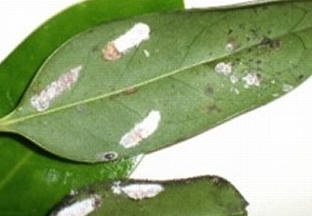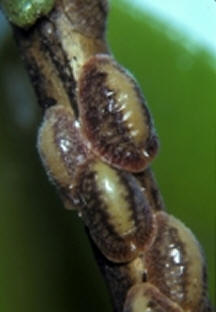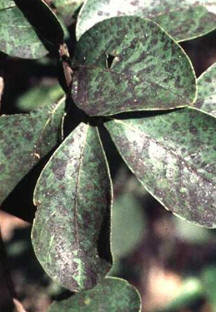Cottony Scales
 DESCRIPTION
DESCRIPTION
Scale insects tap into plants and feed on plant sap, weakening and even killing plants over time. Cottony Scale insects produce cottony egg masses from which young crawlers emerge. These cottony masses can contains hundreds of eggs each. Cottony Scales include Cottony Camellia Scale (Hollies and verious other plants), Cottony Taxus Scale (Yews), Cottony Maple Scales (Silver Maple, Dogwood and others) and Azalea Bark Scale (Azalea, Andromeda and Rhododendron).
LIFE CYCLE
The scales are usually first noticed when the females produce an egg sac which appears to be an elongated ball of cotton. Each cottony mass contains up to 1,500 eggs. After the eggs hatch (usually in June) crawlers emerge and leave the “fluff”. The crawlers walk onto the leaves and twigs and produce large amounts of honeydew, a sugary liquid excreted by many sap-feeding insects. They eventually molt into scales. The male scales emerge as tiny winged gnat-like insects and move around in search of females. After mating, the males die and the female attaches herself to the plant permanently by inserting her mouthparts. In the spring, the female begins to produce copious amounts of honeydew and in May to early June, they begin to produce their ovisacs.
DAMAGE
The white egg sacs are what usually attracts attention to the plant. The developing scales can produce large amounts of honeydew. Honeydew is commonly mistaken for “tree sap” dripping on cars, sidewalks and lawn furniture lying under trees. If honeydew is allowed to remain, molds called “sooty fungus” grow on the material, turning the surface a gray-black color. This is a primary indicator of a soft scale problem.
These insects suck nutrients from the trees or shrubs and can weaken and stress the plant. Leaves may appear off-color and drop prematurely.
CONTROL
Timing is critical and should be done during the crawler stage. Preventative dormant oil sprays may be effective when populations are low. Other treatments are necessary with more severe infestations.




